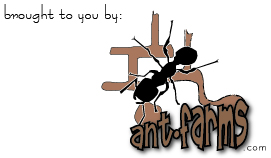Relationship of Humans and Ants
Ants are quite useful for clearing out insect pests and aerating the soil. However, they can become a source of much annoyance when they invade homes, yards, gardens and fields. Carpenter Ants in particular, damage wood by hallowing it out for nesting. Ants and their larvae are eaten in several parts of the world. They are also commonly used as characters in fables and children’s stories to represent industriousness and cooperative efforts.
The most invasive move of ants in the human perspective is when they decide to use people’s houses for their own purposes. This is the very reason why humans should learn more about ants to understand why these creatures would want to come in a particular house. Ants do so for various reasons.
The first and foremost reason why ants come into a house is for food foraging. Ants and humans like similar foods particularly sweets. Humans usually have large supplies of these and other food such as meat and fruits. Water foraging is another reason, most especially in times of drought when they tend to position themselves near faucets. This obviously makes it a lot easier for them to get water to take back to their nest.
New queens coming from their nuptial flights are often found in or around homes looking for nesting sites. Wet and decaying structures in the house are specifically attractive with which to start a colony. Most species need some moisture in their nesting sites such that the presence of structures in said condition makes attractive living quarters for them. Although ants will not usually inhabit any dry housing structure, extreme cases such as flooding, can force them to temporarily occupy human dwelling. This situation, albeit temporary can be very annoying just the same.
The first thing to do in attempting to get rid of ants is to get the proper information before deciding in any course of action. Identification as to whether the ants are queens or workers is very important. Queens can simply be collected and relocated or killed whichever is applicable. All possible entry points should be sealed off to eliminate future problems. Worker ants can either be on a house to forage for food or actually nest in it.
For worker ants that are only foraging for food and water and are nesting outside, the situation can be remedied by eliminating the food or water source. It is generally easier to control the food and water source than to control the ants. Eliminating the source is enough reason for ants not to come back.
Ants that are found to be nesting in the house structure are controlled through various methods. Baiting or the use of poison or professional extermination has varying degrees of success. Attrition is capturing the colony with the use of a prepared trap such as a jar with bait in it. The colony dies by attrition when the worker ants are mostly captured, forcing the queen to leave due to starvation.
Physical removal of ants’ nest is another option. This is accomplished by replacing or repairing house structures with sections that are rotting or damp. Colony elimination is achieved since the disruption is massive. Another way is to provide better homes for these creatures in the form of ant farms.
An ant farm provides an opportunity for humans to actually enjoy having ants in their house in a “controlled” environment. People are able to control where they want their ants to be without necessarily interfering with their natural activities. Ant farms are especially designed to be escape-proof with break resistant frames and viewing windows. Through this, it is now possible to watch ants go about with their life.


